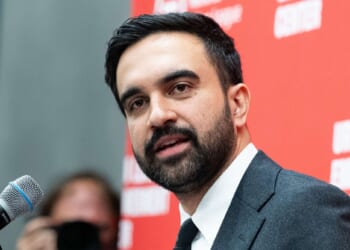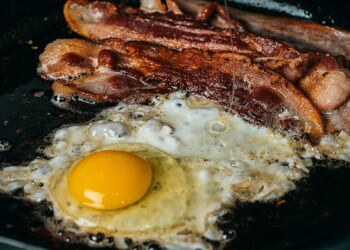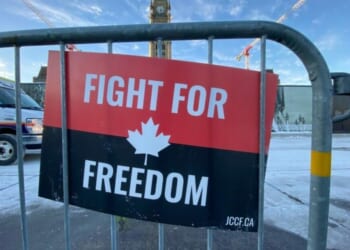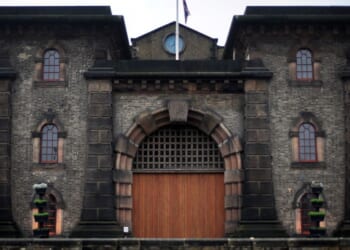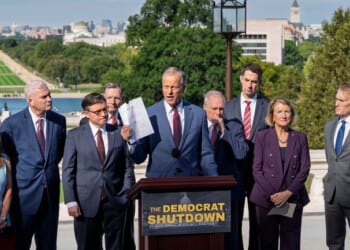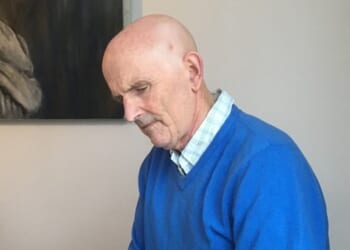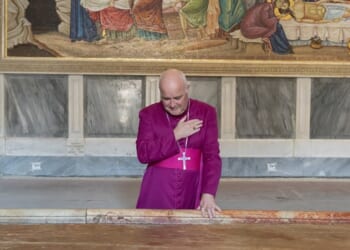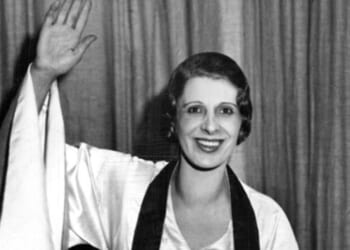“Lindsey Halligan is a really good lawyer,” President Donald Trump said when he publicly ordered Attorney General Pam Bondi to prosecute former FBI Director James Comey. That assessment seemed doubtful five days later, when Halligan delivered the indictment that the president had demanded.
Halligan, a former Trump defense lawyer with no prosecutorial experience, had taken office as the interim U.S. attorney for the Eastern District of Virginia just three days earlier, replacing Erik Siebert, who did not think the case against Comey was worth pursuing. Halligan was much more eager to do the president’s bidding, and she managed, just barely, to obtain an indictment before the charges would have been barred by the statute of limitations. In fact, she seemed to have obtained two indictments that contradicted each other, which ultimately raised an issue that, judging from a hearing on Wednesday, could sink the government’s case.
“This has never happened before,” U.S. Magistrate Judge Lindsey Vaala remarked when Halligan submitted the indictment on September 25. “I’ve been handed two documents [in the Comey case] that are inconsistent with one another. There seems to be a discrepancy. They’re both signed by the [grand jury] foreperson.”
One indictment listed the two charges approved by the grand jury, while the other mentioned a third count that the grand jury rejected. The latter document, Vaala noted, described “a failure to concur in an indictment” but did not specify which count was rejected, so “it looks like they failed to concur across all three counts.” The judge said she was “a little confused as to why I was handed two things with the same case number that are inconsistent.”
Halligan seemed even more confused. She said she had “only reviewed” one of the indictments, “did not see the other one,” and didn’t “know where that came from.” When Vaala pointed out that the document Halligan claimed she never saw “has your signature on it,” the neophyte prosecutor was nonplussed. “OK,” she said. “Well.”
Halligan’s rookie mistake was not merely embarrassing. As U.S. Magistrate Judge William E. Fitzpatrick noted in a ruling on Monday, it raised the question of whether the indictment that the government is pursuing—which charges Comey with perjury and obstruction based on his testimony at a Senate Judiciary Committee hearing on September 30, 2020—was properly approved by the grand jury.
“The grand jury was originally presented with a three-count indictment, signed by the prosecutor,” Fitzpatrick noted. “The grand jury, however, rejected Count 1 of the original indictment and found probable cause as to the two remaining counts. At some point, the prosecutor prepared and signed a second indictment that removed Count 1 of the original indictment. At the return of the indictment, the government presented both the first and second indictments to the magistrate judge. The first indictment indicated that the grand jury failed to find probable cause as to any count. The second indictment indicated that the grand jury found probable cause as to two counts. Both indictments were fully executed by [the] grand jury foreperson and the prosecutor.”
After questioning Halligan and the grand jury’s foreperson, Vaala accepted the second indictment. Since “the second indictment was a new indictment,” Fitzpatrick said, he initially assumed Halligan “would have presented the second indictment to the grand jury for consideration before it was returned in open court.” But he added that “it now appears that may not have happened.” And “if this procedure did not take place,” he said, “the Court is in uncharted legal territory” because “the indictment returned in open court was not the same charging document presented to and deliberated upon by the grand jury.”
The case entered that “uncharted legal territory” on Wednesday during a hearing before U.S. District Judge Michael Nachmanoff, who is overseeing the case. Assistant U.S. Attorney N. Tyler Lemons conceded that Halligan had signed an “edited” version of the original indictment. “The second indictment is a document that was never shown to the entire grand jury?” Nachmanoff asked. “Yes, that is my understanding,” Lemons replied. Nachmanoff also questioned Halligan, who said the second indictment was reviewed only by the grand jury’s foreperson.
Comey’s lawyers think that’s a pretty big deal. The failure to clear the revised document with the full grand jury means “there is no indictment,” said defense attorney Michael Dreeben. And since the statutory deadline for the charges was September 30, he added, Halligan’s procedural failure is “tantamount to a complete bar” to prosecution.
The Fifth Amendment requires that prosecutors obtain a grand jury indictment in felony cases. That requirement, the U.S. Court of Appeals for the D.C. Circuit held in the 1969 case Gaither v. United States, means that grand jurors must see the full text of the indictment. Nachmanoff asked prosecutors and Comey’s attorneys to address the relevance of that decision in assessing the gravity of Halligan’s boo-boo.
Unsurprisingly, Halligan thinks her error was no biggie. “Gaither does not require dismissal of this Indictment,” she says in a brief filed after the hearing. “In Gaither, the grand jury never saw any version of the eventual indictment. In this case, the grand jury was provided the proposed Indictment, deliberated, and determined that probable cause existed to believe that the defendant had committed the crimes charged in two counts.” She notes that the two charges in the “edited” indictment “are identical to the second and third charges that were included in the proposed indictment that was provided to the grand jury.”
Halligan adds that “the Grand Jury foreperson, as the representative of the Grand Jury, endorsed the revised two count Indictment by signing it and explaining on the record in open Court that the Indictment reflected the vote of the Grand Jury.” In short, she says, “the government course of conduct here was permissible and proper.”
Comey’s lawyers have not yet filed a brief detailing their take on how Gaither applies to this case. But however this shakes out, the fact that the issue needs to be addressed at all underlines Halligan’s lack of experience and her haste in obtaining the Trump-ordered indictment before it was too late.
The resulting document was so skimpy and vague that the details of the charges against Comey remained unclear for more than a month. Notably, the indictment was signed by Halligan alone, which reflected internal skepticism of the case. The resistance evidently was so strong that Halligan had to recruit Lemons and another prosecutor, Gabriel J. Diaz, from a different district to help her with the case after she obtained the indictment. But had any of the career prosecutors in her office been willing to join her in seeking the indictment, she probably would have avoided the procedural shortcut that has now raised doubts about the indictment’s validity.
That issue is just one of several reasons that Comey’s lawyers have offered for dismissing the indictment. They also argue that the prosecution is vindictive and selective, driven by Trump’s personal vendetta against Comey, which was the main subject of Wednesday’s hearing. They say Halligan’s appointment as interim U.S. attorney was illegal because Siebert had already served that role for the maximum time allowed by statute. And they argue that the evidence presented by the government is legally insufficient to support the charges.
Relevant to that last point, several news outlets have reported that career prosecutors prepared a memo for Halligan that explained why they did not think there was probable cause to charge Comey. During Wednesday’s hearing, Nachmanoff asked Lemons whether those reports were accurate. “At this point,” Lemons replied, “my posture would be [that] whether [such a memo] existed would be privileged.”
When Nachmanoff asked whether Lemons had been instructed to neither confirm nor deny the memo’s existence, the prosecutor said he was trying to comply with a directive from Deputy Attorney General Todd Blanche’s office, which maintains that the memo is shielded from disclosure because it is a “work product.” But in the process of explaining that, Lemons conceded that the memo does in fact exist.
Judging from a brief signed by Halligan, Lemons, and Diaz, that memo is relevant to Comey’s case for dismissal. To buy his claim of vindictive and selective prosecution, the brief says, Nachmanoff would have to “accept the defendant’s claim that ‘no career or appointed prosecutor had ever agreed’ to prosecute the defendant.” But to support that contention, the prosecutors say, “the defendant provides only news reports relying on anonymous sources.”
Comey’s lawyers, for example, cite an ABC News story as an example of “multiple reports” that “the career prosecutors [in Halligan’s office] ultimately concluded that no case should be brought.” Those reports cannot be trusted, Lemons et al. say, because they rely on “anonymous sources.” But now Lemons himself has indirectly confirmed the doubts that deterred Siebert, which also should have deterred Halligan.


